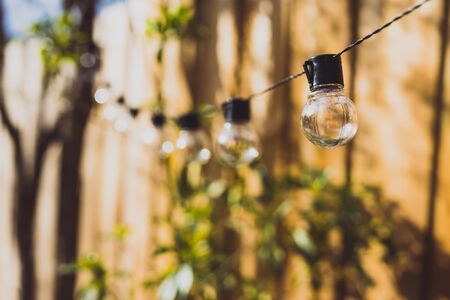Understanding the Importance of Outdoor Lighting Maintenance
Outdoor lighting is more than just a way to illuminate your property; it plays a crucial role in safety, curb appeal, and energy efficiency for American homes and businesses. Regular maintenance ensures that your outdoor lights are always functioning at their best, helping to prevent accidents caused by poor visibility and deterring unwanted intruders. Well-maintained lighting also enhances the overall look of your property, making it more inviting for guests or customers and boosting its market value. Additionally, keeping fixtures clean and replacing outdated bulbs with energy-efficient options can significantly reduce energy consumption, saving you money on utility bills. By prioritizing routine outdoor lighting maintenance, you invest in the long-term performance and attractiveness of your space while contributing to a safer and greener community.
2. Routine Cleaning for Optimal Performance
Keeping your outdoor lighting fixtures clean is essential for maintaining their brightness and effectiveness throughout the seasons. Over time, dirt, debris, pollen, and bugs can accumulate on your lights, dulling their output and potentially leading to long-term issues. Regular cleaning not only ensures your property remains well-lit and safe but also extends the life of your lighting system. Here’s a simple step-by-step guide to keeping your outdoor lights in top shape:
Step-by-Step Cleaning Process
| Step | Description | Frequency |
|---|---|---|
| 1. Turn Off Power | Always switch off the power to avoid electrical hazards. | Every cleaning session |
| 2. Remove Fixtures | If possible, carefully detach fixtures from mounts for easier access. | As needed |
| 3. Dust and Wipe Down | Use a soft cloth or brush to remove surface dust and cobwebs. | Monthly |
| 4. Clean Lenses & Covers | Wash glass or plastic covers with warm soapy water; rinse thoroughly. | Quarterly |
| 5. Clear Bugs & Debris | Open up fixtures to clear out any insects or debris trapped inside. | Monthly |
| 6. Check Seals & Gaskets | Inspect rubber seals to ensure water resistance is intact. | Semi-annually |
| 7. Reassemble & Test | Put everything back together securely and test the lights. | After each cleaning |
Tips for Safe and Effective Cleaning
- Avoid Harsh Chemicals: Stick to mild soap and water to prevent damage to finishes.
- Use Soft Materials: Microfiber cloths or soft brushes help prevent scratching lenses or surfaces.
- Check for Burned-Out Bulbs: Replace bulbs as needed during each cleaning session for consistent performance.
- Wear Gloves: Protect your hands from sharp edges and insects when handling fixtures.
- Tidy Up Surroundings: Trim shrubs or branches that may block light or cause extra buildup on fixtures.
This easy maintenance routine not only keeps your outdoor spaces looking sharp but also maximizes the efficiency of your lighting investment year-round.
![]()
3. Inspecting and Replacing Bulbs
Regularly checking your outdoor lighting for burned-out or dim bulbs is essential for both safety and curb appeal. A simple monthly walk-through of your property at dusk can help you spot any lights that are out or not performing at full brightness. Pay close attention to entryways, pathways, driveways, and backyard living spaces where sufficient illumination is critical. When inspecting, look for flickering or discolored bulbs as these are signs they’re nearing the end of their lifespan.
Choosing the Right Replacement Bulbs
When it’s time to replace bulbs, opt for those specifically designed for outdoor use. These bulbs are built to withstand moisture, temperature swings, and dust—factors especially relevant across diverse U.S. climates. For instance, if you live in the humid Southeast, look for bulbs with high IP (Ingress Protection) ratings to resist water intrusion. In colder Northern states, select LED bulbs rated for low temperatures to avoid premature failure.
LEDs: The Top Choice for Longevity
LED bulbs are highly recommended for outdoor fixtures due to their long lifespan and energy efficiency. They emit less heat than traditional incandescent bulbs, reducing the risk of weather-related damage. Plus, many LEDs offer color temperature options so you can match the ambiance of your home’s exterior.
Installation Tips for Outdoor Bulbs
Before installing new bulbs, always turn off the power to avoid electrical hazards. Clean the fixture sockets to remove debris or corrosion that could impact performance. Finally, ensure the bulb is screwed in securely but not overtightened to prevent damage. By choosing durable replacements suited for your local climate and following these tips, you’ll extend the life of your outdoor lighting system and keep your property shining bright year-round.
4. Checking Electrical Connections
Regularly inspecting your outdoor lighting’s electrical connections is a crucial step in maintaining long-term performance and safety. Faulty wiring, loose terminals, or corroded contacts can lead to unexpected outages and costly repairs. Here’s how you can safely check these components and ensure your lighting system stays reliable year-round.
Safety First: Essential Precautions
- Turn Off Power: Always switch off the power source before examining any wiring or connections to avoid electric shock.
- Wear Protective Gear: Use insulated gloves and tools designed for electrical work.
- Work in Dry Conditions: Never handle electrical components in wet or damp environments.
Inspection Checklist for Electrical Connections
| Component | What to Check | Recommended Action |
|---|---|---|
| Wiring | Look for fraying, cracks, or exposed wires. | Replace damaged sections immediately. |
| Terminals & Connectors | Tightness and signs of corrosion or discoloration. | Tighten loose connections and clean or replace corroded parts. |
| Control Systems (Timers/Sensors) | Proper function and secure connection to power supply. | Test operation and reset or reprogram as needed. |
| Grounding | Secure attachment to ground rods or plates. | Tighten ground clamps and ensure proper contact with soil. |
Troubleshooting Common Issues
- If lights flicker or fail to turn on, double-check all wire nuts and terminal screws for tightness.
- If there’s visible corrosion, use a contact cleaner or replace affected connectors to restore conductivity.
- If automatic controls malfunction, verify that sensors are clean and not obstructed by debris or landscaping features.
Pro Tip: Schedule Seasonal Inspections
Create a routine maintenance plan to inspect your outdoor lighting system at least twice a year—ideally in spring and fall. Regular attention helps catch minor issues before they escalate, ensuring uninterrupted outdoor illumination for your home or business.
A well-maintained electrical system not only prevents inconvenient outages but also extends the lifespan of your outdoor lighting investment.
5. Preventing Water and Weather Damage
Outdoor lighting systems in the U.S. face a wide range of weather challenges, from heavy rains in the Pacific Northwest to snow and ice in the Midwest and Northeast, and even coastal humidity in the South. To ensure your outdoor lighting continues to shine bright, it’s essential to protect your fixtures from water intrusion and harsh elements.
Shielding Against Corrosion
Corrosion is one of the leading causes of early fixture failure, especially in areas near saltwater or with high rainfall. Choose fixtures made from corrosion-resistant materials like brass, copper, or powder-coated aluminum. Regularly inspect for any signs of rust or discoloration, and apply protective coatings when necessary to extend the life of your lights.
Preventing Moisture Buildup
Moisture buildup inside fixtures can lead to short circuits, dimming, or complete failure. Make sure all fixtures have proper seals and gaskets intact. If you notice condensation on the lens, remove the cover to air out the fixture and check for damaged seals. Using silicone-based sealant around cable entry points can also help keep moisture at bay.
Weatherproof Connections
All wiring connections should be protected using waterproof wire nuts or gel-filled connectors. Bury cables at least 6 inches underground if possible to minimize exposure to rain, snow, and temperature swings.
Extreme Weather Preparation
For regions prone to severe storms or freezing temperatures, opt for fixtures rated for wet locations (not just damp). During winter, gently clear snow and ice buildup off fixtures to prevent cracking or breakage. In hurricane-prone zones, secure or temporarily remove delicate landscape lights as needed.
Regular Inspection Is Key
To stay ahead of potential problems, make seasonal checks a habit—especially after heavy weather events. Promptly address any damage to maintain both safety and curb appeal year-round.
6. Seasonal Maintenance Best Practices
To keep your outdoor lighting system functioning at its best throughout the year, it’s essential to adjust your maintenance routines according to each season’s unique challenges. Below are tailored tips for fall, winter, spring, and summer that will help ensure long-term performance and reliability.
Fall: Prepare for Weather Shifts
As leaves begin to fall and temperatures start to drop, inspect your lighting fixtures for debris accumulation. Clear away leaves, branches, and dirt from around fixtures to prevent blockages and moisture buildup. This is also a good time to check for any exposed wires or loose connections that may have surfaced during summer storms.
Winter: Protect Against Harsh Elements
Cold weather, snow, and ice can be tough on outdoor lighting. Ensure all fixtures are tightly sealed against moisture ingress and replace any cracked or broken covers. Regularly brush off snow and ice from lights to avoid excess weight or water damage. Consider using timers or smart controls to reduce energy use during shorter daylight hours.
Spring: Clean and Inspect Thoroughly
With the thaw of spring, give your entire outdoor lighting system a detailed cleaning. Wipe down lenses and fixtures to maximize brightness. Test all bulbs and connections—replace any components damaged by winter weather. As landscaping begins to grow, trim plants that could obstruct light beams or cause overheating near fixtures.
Summer: Optimize for Longer Days
During summer, increased outdoor activity means your lights will see more use. Check for insects nesting inside fixtures and clean out any cobwebs. Adjust timers or photocells to align with extended daylight hours, and look for signs of overheating in areas exposed to direct sun. If you host gatherings, make sure pathway and accent lighting are clear of clutter and fully operational.
Year-Round Tip: Stay Proactive
No matter the season, schedule regular check-ins every few months to spot issues early. By tailoring your approach with these seasonal best practices, you’ll keep your outdoor lighting reliable and looking great all year round.
7. When to Call a Professional
While regular DIY maintenance can keep your outdoor lighting system in top shape, there are times when calling a professional is the safest and most effective option. Recognizing when to seek expert help not only saves you time and money but also protects your investment for years to come.
Recognizing Complex Issues
If you notice persistent flickering lights, recurring power outages, or exposed wiring, these may indicate underlying electrical problems that require specialized expertise. Additionally, if your system has suffered storm damage, water intrusion, or significant corrosion, it’s best to leave repairs to a licensed technician who understands local building codes and safety standards.
Upgrading or Expanding Your System
Planning to add new fixtures, integrate smart controls, or upgrade to energy-efficient LEDs? Professionals can assess your current infrastructure, ensure proper installation, and optimize performance while adhering to U.S. electrical codes.
How to Find Reputable Service Providers
Start by searching for certified outdoor lighting contractors in your area—look for credentials such as membership in the Association of Outdoor Lighting Professionals (AOLP) or state licensing. Read online reviews from platforms like Yelp or Google, and ask neighbors for recommendations. Always request a written estimate and warranty details before hiring. By choosing experienced professionals with strong local reputations, you’ll secure peace of mind and long-term performance for your outdoor lighting investment.

